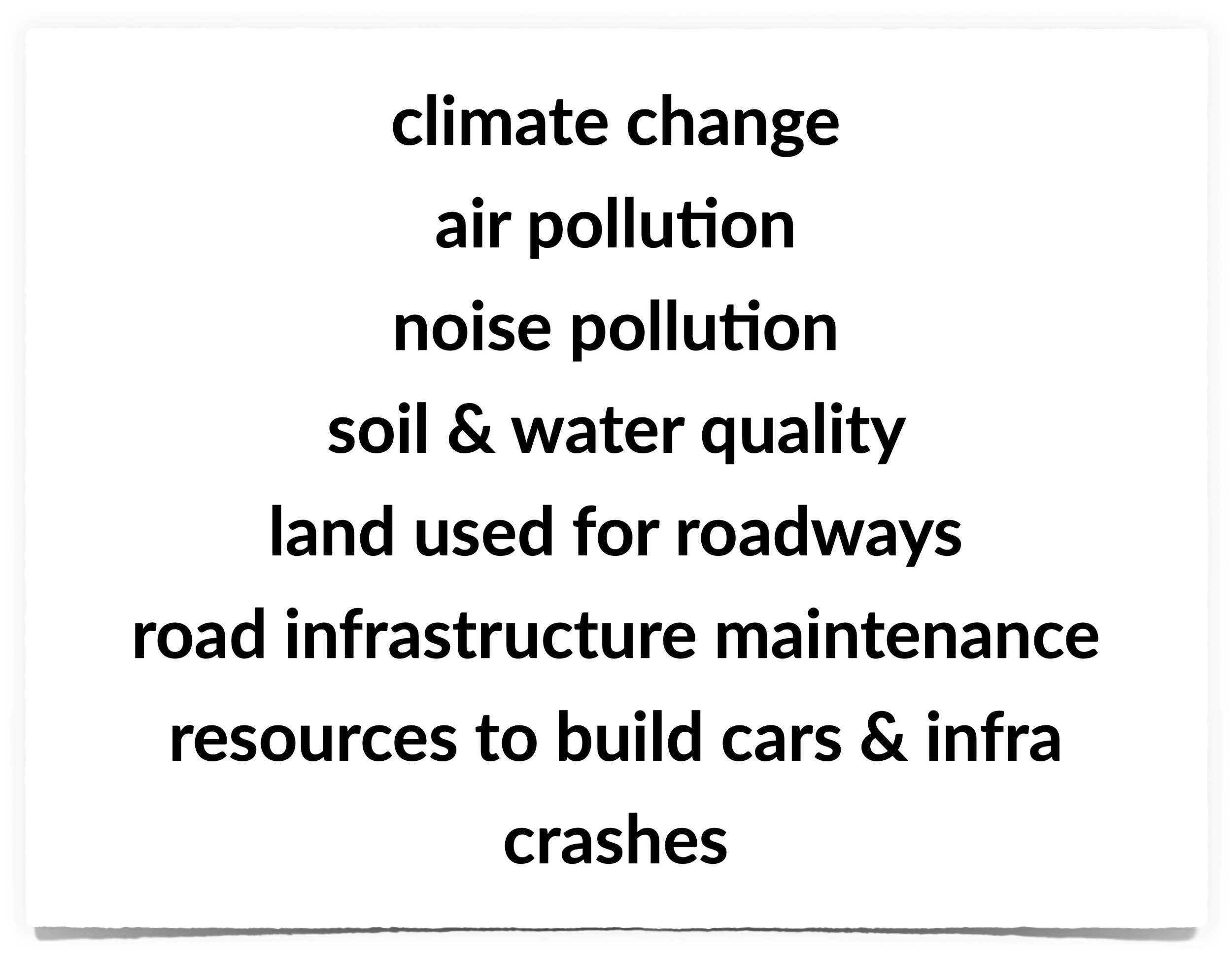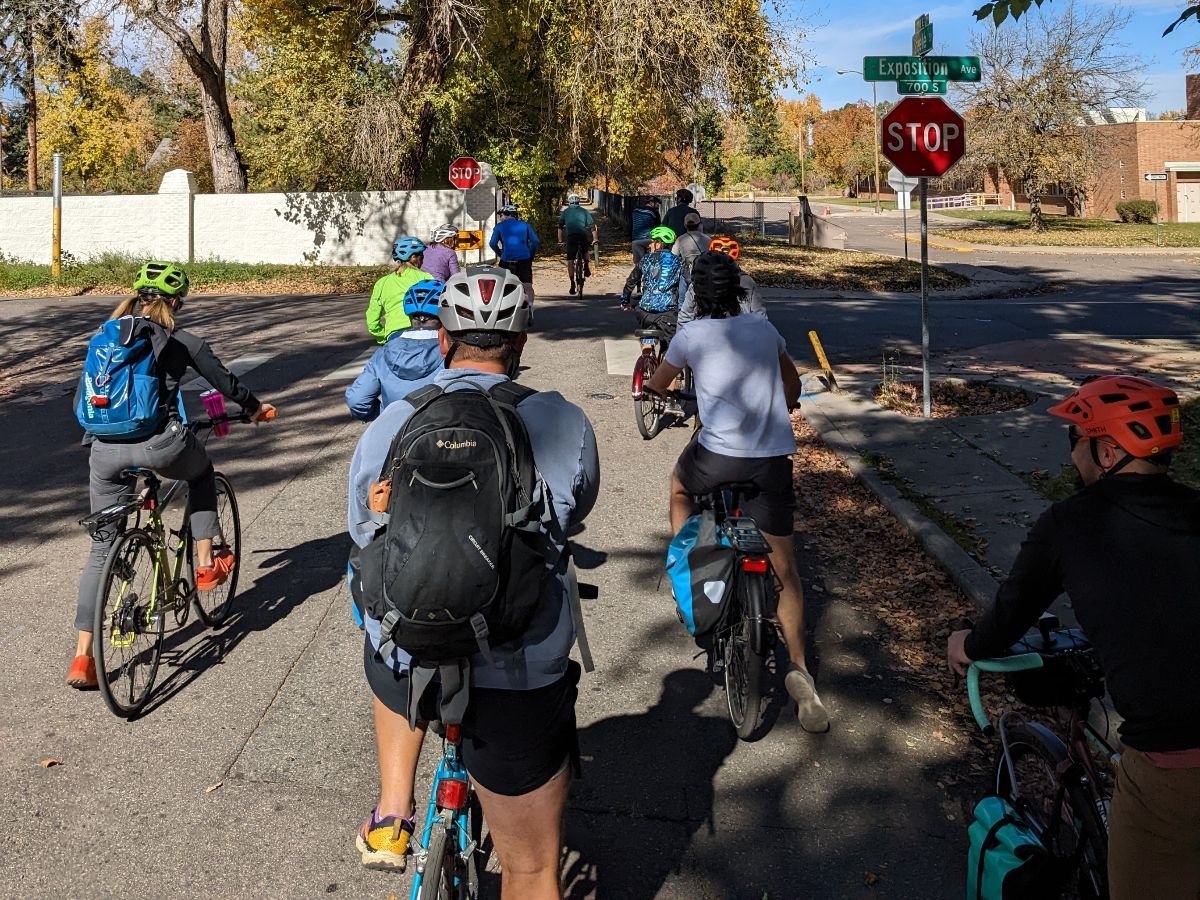62 Cents
What’s the value to society of replacing a driving mile with a biking mile? We’ve long been fascinated by this question. And now we have an initial answer: 62 cents.
This number is important because it can help justify a wave of public investment in projects like VAMOS – infrastructure, programming, and promotions to get people to replace car trips with bike trips.
Our volunteers Nick and Avi discovered a breakthrough paper which found that each bike mile that replaces a car mile is worth 62 cents to society (adjusting for inflation and the Euro to Dollar exchange rate.)
Each mile someone drives has hidden costs for society, “externalities” in economist-speak. A tragic public health example is the connection between air pollution and asthma, lung development in children, cancer, and premature death.
Externalities affect everyone but they often fall disproportionately on vulnerable communities. Nick recently worked outside Prodigy Coffeehouse at the interchange of I-25 and I-70 in Globeville. After a few minutes, his computer was covered in fine dust, particulate matter that also enters the lungs of the children playing at Garden Place Elementary School a block from the coffee shop.
The study finds that air pollution from driving costs society 1.5 cents per mile and the total hidden costs of driving are 23 cents per mile, accrued from the impacts of:
On the flip side, the per-mile societal benefit of riding a bike is 39 cents, accrued primarily in this study through a reduction in the health care costs society bears.
At the top, we described 62 cents as an "initial answer" because the study is imperfect. It was conducted in Europe in 2019, so some of the costs and savings may not be the exact same in the US. This may be especially true with health care costs, which tend to be higher in the US and are borne by employers, Medicare, and Medicaid. We'd also like to see a more expansive analysis of the financial benefits of each bike mile, for example the increase in local commerce that is widely observed when walking and biking rates increase.
Imperfect as the analysis may be, our hope is that quantifying the benefits of riding a bike and the costs of driving can help leaders make more informed investment decisions. Instead of pouring the vast majority of resources into motor vehicle infrastructure that costs more and more over time, we have the numbers to justify investments in our community that will return huge benefits for years to come -- for example, the 5280 Trail, which the Downtown Denver Partnership recently demoed on Acoma.
We built a basic model showing the return on investment (ROI) of getting new riders to replace car miles with bike miles. The model assumes that the average new rider bikes three miles a day. This equates to $682 in value to society per year.
10,000 new riders equates to $68 million in positive value to society over 10 years.
We estimate that the all-in costs of VAMOS are about $60 million for 400 miles (or, 800 miles the way the City double counts) of Shared Streets, protected bike lanes, shared-use trails, and new traffic signals. Incorporating these costs into the model gets us to an $8 million net benefit to society.
The goal of our Bike Streets work, however, has always been more ambitious: to get 100,000 people of all ages, abilities, and backgrounds to replace car trips with bike trips every day. If we’re successful, that would produce a total ROI to society of $621 million.
In those two scenarios, there’s a number we’re calling “CPNR,” the cost per new rider, which is analogous to what businesses call “customer acquisition costs.” In the 10,000 new riders scenario, we’re spending $6,000 to activate each new rider. In the 100,000 scenario, it’s $600. The importance of that number is one of the reasons we are fixated on the community organizing and behavioral challenges beyond infrastructure. If we can push CPNR down – if we can get better at getting people to swap car miles for bike miles – it strengthens the argument for even more investment dollars.
Starting in the 1980s, the Dutch built more than 7,000 kilometers of bike infrastructure. In recent years under visionary mayor Anne Hidalgo, Paris is investing €250 million in new bike infrastructure. That sounds like a big number, but when you run the ROI calculation, it makes a lot of sense.
This is similar to our vision for VAMOS: creating an interconnected Bike Network for Everyone that makes it easy for anyone to ride to any destination in Denver. The examples from Holland and Paris show that we can transform our cities into more sustainable and healthy places.
Societies can change. And our hope is that demonstrating the financial prudence of change accelerates the transformation.
















